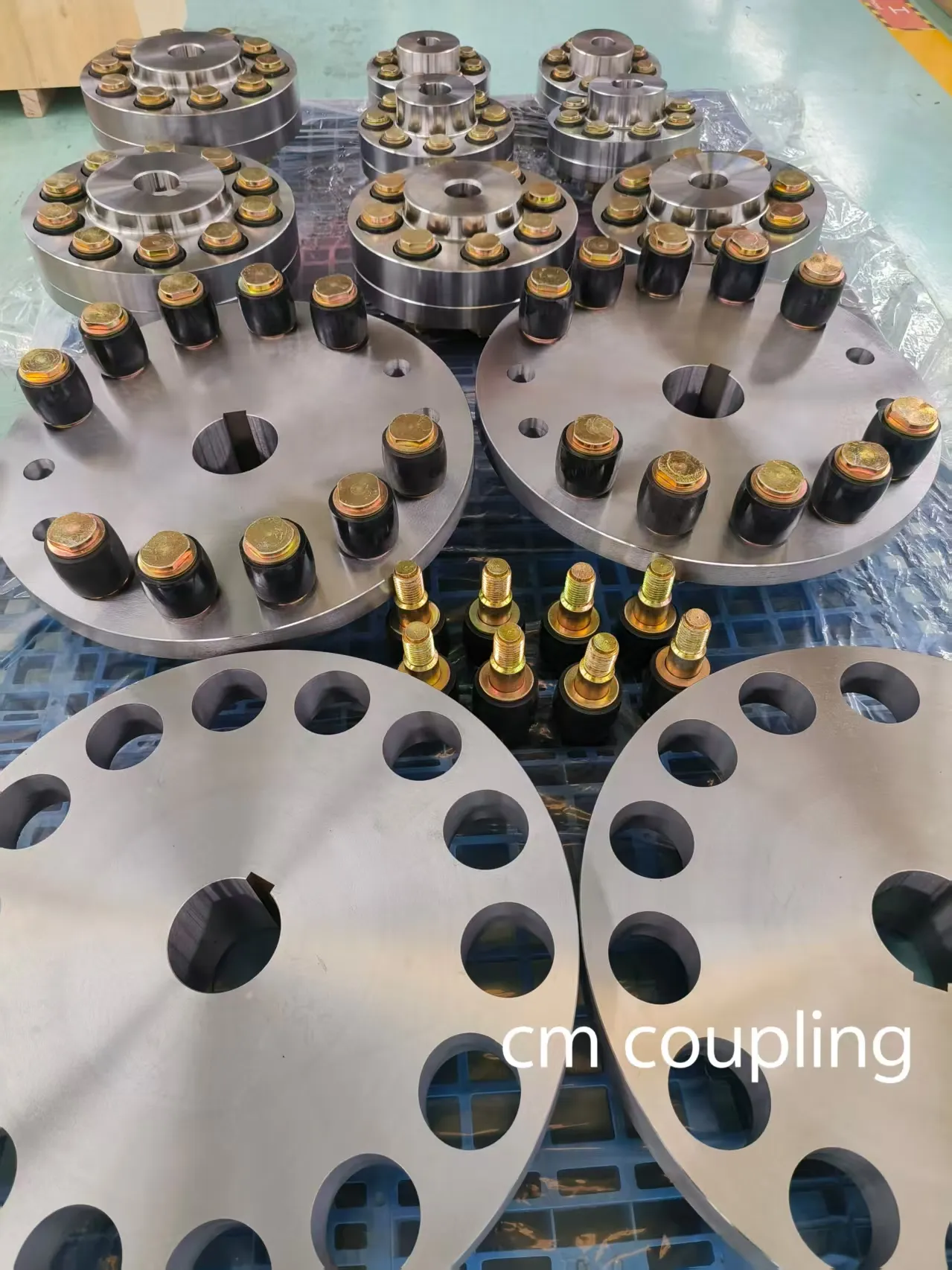Copyright © 2025 Chuangming Coupling (Jiangsu) Co.,Ltd.
The elastic coupling meets the performance requirements for use
2025-08-15
To avoid disassembling the machine when changing the rubber sleeve, sufficient space should be reserved in the design; to compensate for the axial displacement, a corresponding size of gap should be left during installation. By using the elastic sleeve, the offset between the two shafts can be compensated, absorbing, reducing vibration and buffering. Therefore, it is widely used on high-speed shafts with frequent forward and reverse changes and frequent startups. The elastic coupling connects the two halves of the coupling by using elastic elements. To prevent slippage, baffles are installed at both ends.
The structure of the elastic coupling is simple and it is easy to replace. The compensation for the offset is similar to that of the elastic sleeve-pin coupling. If the two shafts can be aligned and the stiffness of the shafts is high, a rigid flange coupling can be selected; if alignment is difficult and the stiffness of the two shafts is low, an elastic coupling with compensation capability can be chosen; when the radial displacement between the two shafts is large and the rotational speed is low, a slider coupling can be selected.
When the angular displacement is large or when the two shafts intersect, a universal coupling can be selected. For the torque transmitted by the two shafts, in cases of high power and heavy load transmission, a gear coupling can be chosen; for medium and small power with impact loads, an elastic coupling can be selected. The working speed of the coupling, with the high speed causing a large centrifugal force, therefore, for high-speed transmission, a gear coupling should be selected instead of the slider coupling with eccentricity.
.
The manufacturing, installation, maintenance and cost of the coupling should be selected based on the premise of meeting the performance requirements of use. It is advisable to choose a coupling that is easy to disassemble and assemble, simple to maintain, and has a low manufacturing cost. The elastic coupling and the shaft usually adopt a tight interference fit, and the connection is very tight. During long-term operation, the metal atoms combine with each other, and the shaft and the coupling are firmly fastened. Even with tools, it is very difficult to remove the coupling.
To avoid disassembling the machine when changing the rubber sleeve, sufficient space should be reserved in the design; to compensate for the axial displacement, a corresponding size of gap should be left during installation. By using the elastic sleeve, the offset between the two shafts can be compensated, absorbing, reducing vibration and buffering. Therefore, it is widely used on high-speed shafts with frequent forward and reverse changes and frequent startups. The elastic coupling connects the two halves of the coupling by using elastic elements. To prevent slippage, baffles are installed at both ends.
The structure of the elastic coupling is simple and it is easy to replace. The compensation for the offset is similar to that of the elastic sleeve-pin coupling. If the two shafts can be aligned and the stiffness of the shafts is high, a rigid flange coupling can be selected; if alignment is difficult and the stiffness of the two shafts is low, an elastic coupling with compensation capability can be chosen; when the radial displacement between the two shafts is large and the rotational speed is low, a slider coupling can be selected.
When the angular displacement is large or when the two shafts intersect, a universal coupling can be selected. For the torque transmitted by the two shafts, in cases of high power and heavy load transmission, a gear coupling can be chosen; for medium and small power with impact loads, an elastic coupling can be selected. The working speed of the coupling, with the high speed causing a large centrifugal force, therefore, for high-speed transmission, a gear coupling should be selected instead of the slider coupling with eccentricity.
.
The manufacturing, installation, maintenance and cost of the coupling should be selected based on the premise of meeting the performance requirements of use. It is advisable to choose a coupling that is easy to disassemble and assemble, simple to maintain, and has a low manufacturing cost. The elastic coupling and the shaft usually adopt a tight interference fit, and the connection is very tight. During long-term operation, the metal atoms combine with each other, and the shaft and the coupling are firmly fastened. Even with tools, it is very difficult to remove the coupling.